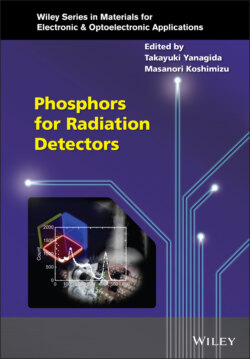Читать книгу Phosphors for Radiation Detectors - Группа авторов - Страница 22
1.4 Ionizing Radiation Induced Storage Luminescence 1.4.1 General Description
ОглавлениеAs explained in Section 1.3, after the absorption of ionizing radiations in a material, a large number of secondary electrons are generated, some of which contribute to scintillation. On the other hand, some of the other secondary electrons are trapped at trap sites which are often caused by lattice defects, and they sometimes become meta‐stable. In this case, if we input the energy corresponding to the energy difference between the bottom of the conduction band and the trap site which is considered as a trap depth, then these trapped electrons can be re‐excited, and some of them can reach luminescence centers to emit photons. We refer to the input of the energy as a stimulation. When the stimulation is an illumination of light or heating, we call the emission phenomena an OSL or TSL, respectively. In the case where the trap depth is deeper than the energy of room temperature, we can store the information of the incident ionizing radiation as a form of the carrier trapping stably for a long time, and we can use such a storage phosphor with a deeper trap for the personal dosimeter. RPL can be considered as one of the special trapping phenomena. In the cases of OSL and TSL, the trapping site occupied with an electron or a hole does not show a PL property. But in a special case, the trapping site occupied by an electron or a hole can obtain a function of PL. In this case, we can observe a PL by such a newly generated emission center consisting of the trapping site and carrier, and we call this PL as RPL. These newly generated emission centers are called RPL centers. Figure 1.8 shows a similar drawing, but for TSL, OSL, and RPL, refer to Figure 1.3.
Figure 1.8 Emission mechanisms of TSL, OSL, and RPL.
